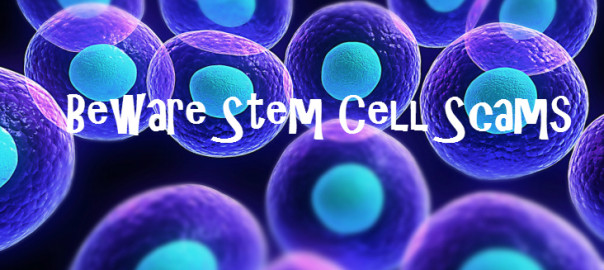Stem Cell Therapy: Not Without Risk

Stem cell therapy is becoming a phrase thrown around with abandon. People are increasingly aware of regenerative medicine as a panacea for a spectrum of maladies, ranging from baldness to blindness. Clinics offering adult stem cell treatments are mushrooming in unregulated medical tourism centers in far-flung countries, offering hope to the desperately ill.
Stem cells are unique in their ability to duplicate themselves through the process of cell division and differentiation, permitting the development of tissues and organs to replace damaged body parts. For instance, adult stem cells could potentially replace the damaged neurons in the brain of a patient suffering from Alzheimer’s disease to restore mental capacity.
Although adult stem cell harvesting has the potential to treat virtually any disease that ails the human body, it is critical to remember that with the exception of bone marrow transplantation, the research for all other conditions is still in the preliminary stage with no studies or published results to support the claims of proponents of these therapies.
Scammers are taking advantage of the scientific buzz that surrounds stem cell therapy and using it as a tool to prey on people battling devastating diseases. Miracle cosmetic treatments are being promised to tempt people to part with thousands of dollars. Untested and unproven, these experimental therapies are ineffective at best, and fatal at worst. The problem is not limited to foreign countries. There have been alarming reports of legitimate clinics offering stem cell therapy disguised as medicine in the United States.
Patients and consumers should ask for the results of formal clinical trials and published scientific evidence before committing to a therapy. Both immediate and long-term risks associated with the procedure should be carefully discussed, with an awareness that stem cell transplants can result in serious or even life-threatening complications such as organ damage, infertility, new cancers, infections, and even death. It is important to understand that very few stem cell treatments have currently been proven safe for human use; just because the cells are retrieved from the patient’s own body does not make them automatically safe.
It’s easy to become confused between clinical trials and experimental therapies. The former are regulated by agencies such as the United States Food and Drug Administration (FDA) and preclinical trials are conducted to ensure the safety and efficacy of the treatment in human subjects. The latter are expensive, based on empty promises, and have no data to support their alleged claims to success. Consumers should be aware that patient testimonials are merely marketing strategies used by clinics and can be misleading.
While stem cell therapy holds tremendous promise and regenerative medicine could revolutionize the way mankind treats diseases, this is a time for cautious optimism. As with all innovative therapies, the debate continues on whether the risks of stem cell therapies justify delaying their availability to the gravely ill and whether waiting for additional studies is really necessary. Until further research can conclusively prove the safe and effective applications of these therapies and standardized regulatory mechanisms can be put in place, all exaggerated claims should be viewed with skepticism, with the current scientific limitations of stem cell therapy in mind.
References:
http://www.marketwatch.com/story/stem-cell-treatments-offer-hope-but-carry-risks-2016-03-08


